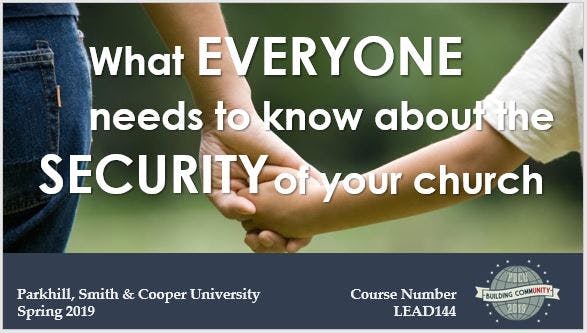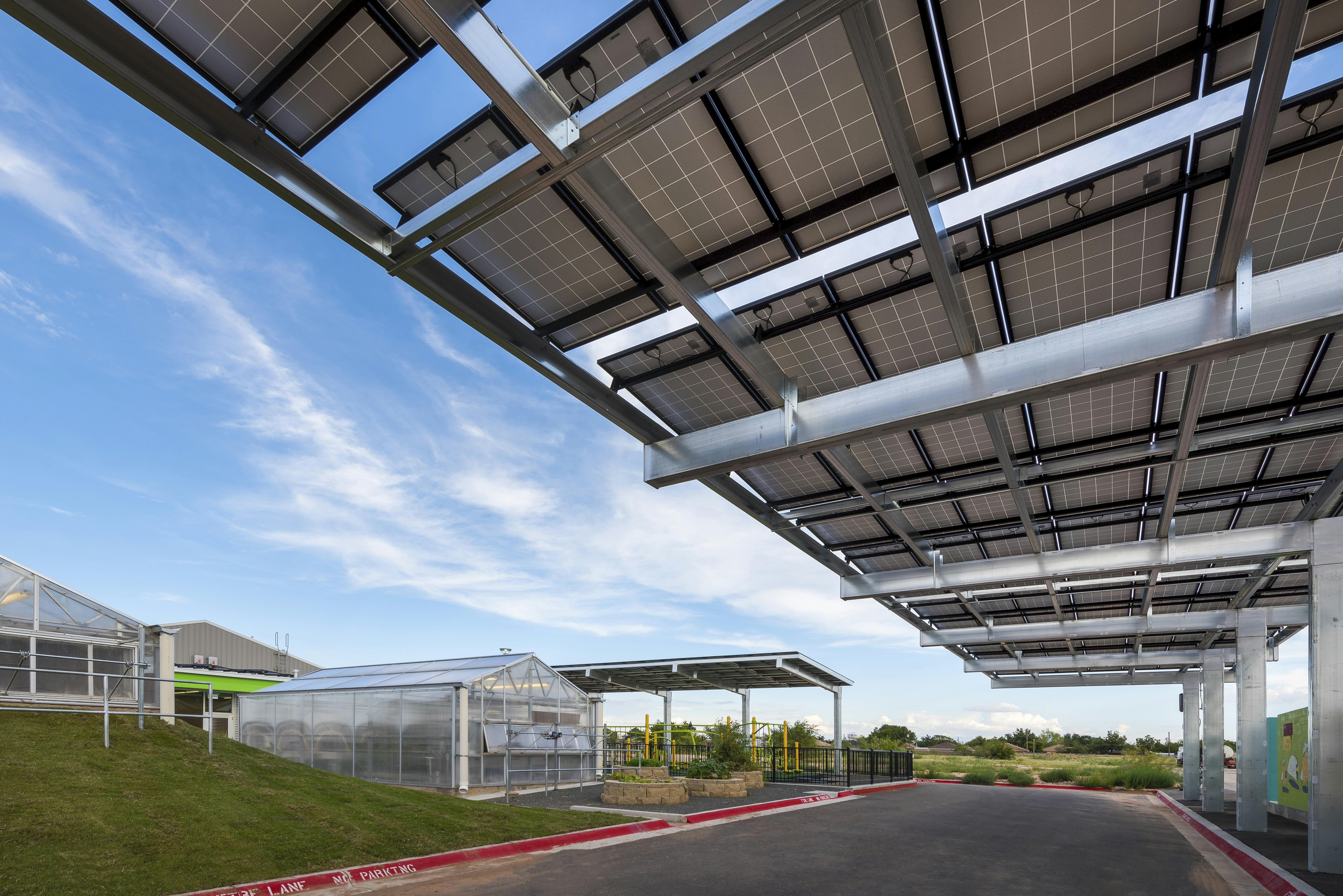University of Parkhill 2019: What Everyone Needs to Know About the Security of Your Church
Written By: Valerie Edgren
Date: March 13, 2019

 What are the biggest threats to a church? The all-too-real possibility of unpredictable violence and unsafe environments has turned the thoughts of many church members and officials to security concerns and solutions both inside and outside the sanctuary. The media focuses on active shooters entering churches, but there are other threats to congregations as well including sexual predators or family disputes.
What are the biggest threats to a church? The all-too-real possibility of unpredictable violence and unsafe environments has turned the thoughts of many church members and officials to security concerns and solutions both inside and outside the sanctuary. The media focuses on active shooters entering churches, but there are other threats to congregations as well including sexual predators or family disputes.
Kreg Robertson, AIA, taught the University of Parkhill course, “What Everyone Needs to Know About the Security of Your church.” This course is registered with AIA Continuing Education System for continuing professional education. During this class, Kreg discussed what a church can do logistically and simple solutions to improve the safety of the building, children, congregation and staff. Kreg said there are several inexpensive measures a church can put into place to improve safety including simply raising awareness and plans of action. Making safety a part of the church’s ministry embodied his message.
 “One of the biggest threats to our churches is child safety and security,” he said. “It’s not just about active shooters. There is a lot more that’s going on. The biggest thing is to think of this from a safety standpoint.”
“One of the biggest threats to our churches is child safety and security,” he said. “It’s not just about active shooters. There is a lot more that’s going on. The biggest thing is to think of this from a safety standpoint.”
Having a plan and a notification system put into place in case a child is lost or kidnapped is the place to start. Kreg said that no matter the size of a church questions such as “What do you do about a lost child?” or “Is there a safe place to take a lost child?” need to be answered.
The safety of adults is just as important. What happens if someone has a heart attack? Kreg said having a defibrillator for heart attack victims, and people who are trained in CPR are two safety examples that will help in planning for certain situations before they happen.
 The design of the building also has a lot to do with safety. Some churches have multiple entries and private areas such as courtyards to hide unwelcome activity. Visual deterrence is one of the greatest things a church can do for security. If a security vehicle is parked out front or a security guard is at the main entrance, someone with violent intentions is less likely to enter. Keeping doors locked, trimming bushes and trees that could be access to the roof or hiding places is another act of visual deterrence.
The design of the building also has a lot to do with safety. Some churches have multiple entries and private areas such as courtyards to hide unwelcome activity. Visual deterrence is one of the greatest things a church can do for security. If a security vehicle is parked out front or a security guard is at the main entrance, someone with violent intentions is less likely to enter. Keeping doors locked, trimming bushes and trees that could be access to the roof or hiding places is another act of visual deterrence.
“We talked to a client who knew a marshal, and he said churches are too open,” Kreg said. “I would contend that it’s so open you’re aware of what’s coming.”
There are 3 layers of security every church should consider implementing:
- The front door is locked. Visitors must press a buzzer to enter.
- Have a receptionist area where people entering the building are required to check in. that area should have a clear line of sight so that a receptionist can see someone coming from a long way off.
- Have one point of entry into the ministry areas. Individual areas have the ability to lock down, preventing access to a center area but still providing a means of escape from a life-safety standpoint.
Kreg reiterated that security is much more about safety than an active shooter situation. Accountability, common sense and awareness are large parts of security. Accountability keeps multiple parties involved, so sexual misconduct and bullying can be prevented or quickly dealt with. Some situations can be easily prevented by using common sense. A church with multiple entries should keep those entries locked or under surveillance, and female staff should never be left alone after hours.
 Kreg said the security team made of male and female staff and volunteers can help leaders in the church have safety practices put into place, educate the congregation on safety and deal with situations as they happen. Safety practices such as a welcoming strategy at church events and on Sunday mornings can help distinguish new faces and possibly an uncomfortable presence.
Kreg said the security team made of male and female staff and volunteers can help leaders in the church have safety practices put into place, educate the congregation on safety and deal with situations as they happen. Safety practices such as a welcoming strategy at church events and on Sunday mornings can help distinguish new faces and possibly an uncomfortable presence.
“Your security team’s job is to know what to do,” Kreg said. “You should be trying to de-escalate the situation not provoke it to violence.”
Having layers of security and accountability is important. The biggest goal is to have plans in place that are incorporated into a church’s ministry.


